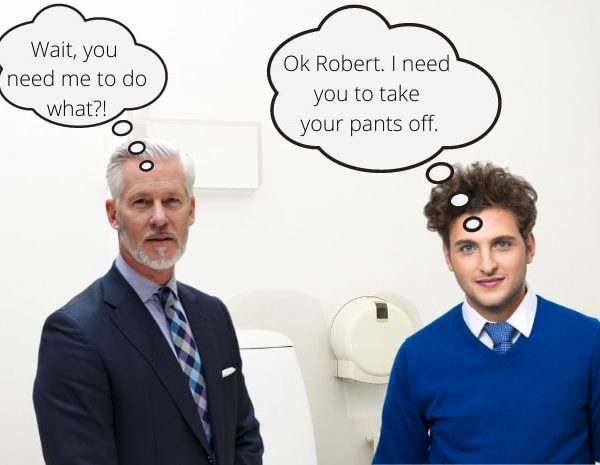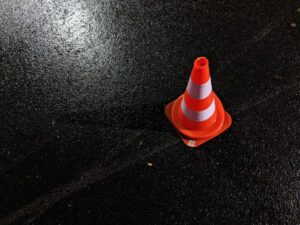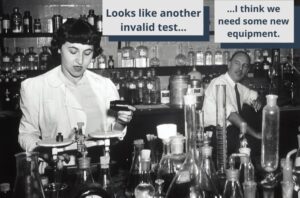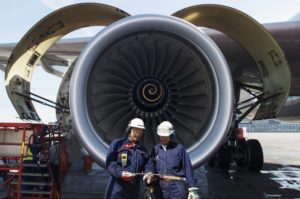The Department of Transportation (or DOT) requires a DOT drug test collection to be directly observed in only a few situations.
Keep in mind that DOT drug testing needs only be done for employees in safety-sensitive positions. Click the link to get a rundown of the FAA and FMCSA safety-sensitive positions.
For employees not in safety-sensitive positions, employers may do non-DOT testing, but this is not federally regulated and typically follows different rules. In some instances of non-DOT testing, direct observation urine collections may not be legal. It can vary from state to state. Click the above link for a breakdown on the differences between DOT and non-DOT testing.
The first two situations involve the urine specimen collector. Remember, the urine specimen collector is the person responsible for collecting the urine sample from the employee. They then send it to the lab for testing.
Getting Caught Tampering with the Urine Specimen
The first instance is when the collector catches the employee tampering with the specimen. Once that urine hits the specimen container, it is no longer your property. It is the property of the DOT.
So if you get caught messing around with it, the collector must require a new directly observed collection. They must ensure that they get an honest urine collection. I’d think that even the employee would have a hard time making a case against this turn of events, though I’m sure that they would try…
Also, to be clear, tampering involves adulterating or substituting a urine specimen.
For example, if the urine specimen collector caught the employee adding soap from a soap container (although these should be emptied and sealed before testing, of course) to his or her urine specimen, then that would be grounds for a direct observation specimen collection. The collector, and the DOT, consider adding something to the urine as adulteration of the specimen.
An example of substituting a urine specimen would be if the employee brought a specimen of someone else’s urine to replace with his or her own urine.
Also, if the collector catches the employee with items that could be used to tamper with the specimen, the collector may require a direct observation urine collection. And they will require it even if the collection hasn’t happened yet.
In summation, the first instance in which a directly observed DOT drug test is required is when the collector catches the employee in the act of tampering.
Urine Specimen Showing Signs of Tampering
The second instance is when the collector notices that the urine specimen itself shows signs of tampering. In the collection process, the collector must do some preliminary testing. This testing is to check for any overt signs of tampering. Also, it is to ensure that the specimen is fit for lab testing.
The collector must check three things. One, they must check that there is a sufficient amount of urine for lab testing. The specimen must contain at least 45 mL of urine. If there is not enough urine, it can compromise lab testing as well as prevent labs from splitting the specimen.
What I mean by “splitting the specimen” is that the lab splits the urine specimen into two bottles: one for the initial test, and another for any re-test after an appeal. Without the second bottle, the MRO may have to cancel the drug test result.
Two, they must check the temperature of the urine specimen. The urine’s temperature must fall between 90-100. If it does not, then the collector is going to carry out a direct observation urine collection. If the temperature is off, it suggests that a foreign substance was added to the urine to affect the test results.
So if you have inhumanly hot or cold urine, get ready for that direct observation urine collection.
Third, the collector must check for any overt signs of tampering. Examples would be an unusual odor, characteristic, or color to the urine.
They outline these situations where the collector must require a direct observation urine collection in 49 CFR Part 40.
Atypical Lab Results
The next couple of instances in which the DOT requires direct observation urine collections involve the medical review officer (or MRO).
In our third instance, the lab reports atypical results to the medical review officer, and the employee could not provide a legitimate medical explanation for those atypical results.
Typically, the MRO will give the employee the opportunity to get a physician examination to find any legitimate medical explanation for the lab reports. If the physician exam uncovers some viable medical reason, the MRO will cancel the test.
But if the physician exam reveals nothing, then the medical review officer requires a direct observation urine collection. Without medical explanation, the MRO suspects tampering.
Employee Appeals a Positive/Refusal to Test Result, But Split Specimen Missing
Our fourth scenario in which direct observation drug testing is done begins with a failed drug test. Then, the employee appeals that result, requesting testing of the split specimen.
But for whatever reason, the split specimen isn’t available for testing. Maybe there wasn’t enough urine, or it is simply missing. Either way, it can’t be used for the appeal. End result: the test is cancelled.
When a positive DOT test result is cancelled, the MRO orders the employee to get a direct observation drug test done.
The reasoning for the direct observation is that the employee failed a drug test, even though it had to be cancelled due to technicalities. So there is reason to believe that the employee may be less than forthright in the collection process.
DOT Return-to-Duty or Follow-Up Test
In our fifth and final instance of direct observation urine collections, the DOT requires it when doing a return-to-duty or follow-up test. All DOT return-to-duty and follow-up tests must be directly observed.
So if you fail a drug test and have to go through the DOT return-to-duty process, prepare yourself for multiple direct observation urine collections.
Your return-to-duty test and all of the follow-up tests required by the substance abuse professional (SAP) will be directly observed. Good times.
Why Does The DOT Require Direct Observation in These Situations?
The DOT requires direct observation urine collections in these situations because they are more effective at preventing tampering than a standard collection. The employees in these situations have raised the suspicions of the collector, lab, and/or MRO already.
Why Aren’t All Tests Directly Observed Then?
Direct observation urine collections are more effective at stopping tampering because they are also more invasive. Because they are more invasive, the DOT reserves direct observation urine collections for employees only in the above situations, i.e. the ones who have raised suspicion.
What Exactly is a Direct Observation Urine Collection, and How is it More Invasive Than a Standard Collection?
Well, I think when we explain what a DOT direct observation urine collection is, you will understand why it is more invasive. So let’s talk through exactly what happens in a directly observed collection.
First, an observer must check you for a device that could carry clean urine. To do this, you must raise up your shirt or dress above the navel and lower your pants and underwear to “mid-thigh.” So, the observer is getting a good look at all the assets.
Then, assuming you don’t have a device for carrying clean urine, the observer must watch you pee into the collection container. They have to see the urine leave your body and enter the container.
If you refuse to do any part of the direct observation collection, it is considered a refusal to test.
Suffice it to say, Tobias Funke would have had a hard time with a direct observation urine collection.
Can a Female Observe a Male in a Direct Observation Drug Screen, and Vice Versa?
No, the observer always has to be the same gender as the employee. So even though these direct observation drug screens are pretty much full frontal, at least it’s not someone of a different gender.
Also, keep in mind that the observer does not have to be the collector. It can be someone who the collector has instructed on how to carry out the directly observed collection.
Are There Questions Regarding the Legality of Directly Observed Drug Screens?
Yes, at the state level. For example, the Ohio Supreme Court is presiding over a case on direct observation drug screens at the moment. In that case, the plaintiffs are contending that direct observation methods are unreasonable and invasive.
The defendants, of course, are arguing that they have real reason for ensuring that employees don’t tamper with their specimen. And direct observation methods help to ensure accurate tests. They both have valid points; so it should be interesting to see how it unfolds in Ohio.
That being said, it is still legal at the federal level, which is why the DOT can require direct observation urine collections in the above situations.
Is There a Difference Between Direct Observation and Monitored Urine Collections?
Yes, a monitored collection is quite different than a directly observed collection. It is not nearly as invasive.
In a monitored collection, the collector or specified monitor enters the restroom with the employee, but the monitor does not check for a device and does not watch the urine leave your body and enter the container. The monitor stands outside the stall while the employee provides the specimen.
The monitored collection is used in instances where the collection occurs in a public restroom that has stalls; this sometimes happens when a test is needed urgently.
Also, a monitored collection occurs when the restroom has a water source that cannot be cut off. Obviously, that water source can be used to dilute and tamper with a specimen.
Unlike the direct observation urine collection, the monitor in monitored collections can be a different gender from the employee if the monitor is a trained medical professional.
If you are into specimen collections and would like to learn more about the subtleties of each collection process, you can check out these DOT Urine Specimen Collection Guidelines. They provide all of the dirty details.
Is a DOT Pre-Employment Drug Test Ever Directly Observed?
An initial pre-employment drug screen is never directly observed. In fact, the same can be said for random tests.
However, if the collector notices or suspects tampering, then it could certainly turn into a direct observation urine collection. So, if you’d like to avoid direct observation, be nice to the collector, don’t show up with a hidden container of clean urine under your sock, and don’t obstruct the collection process in any way.
If you do all of that, then you should be good to go.
Closing Words
In summation, you will only have to do a direct observation urine collection if you do something to raise the suspicion of the collector, lab, and/or MRO. If they catch you tampering or suspect tampering, then they will require you to do a direct observation urine collection.
So, if it is something you are concerned about, then don’t tamper with the urine. Simple as that.






